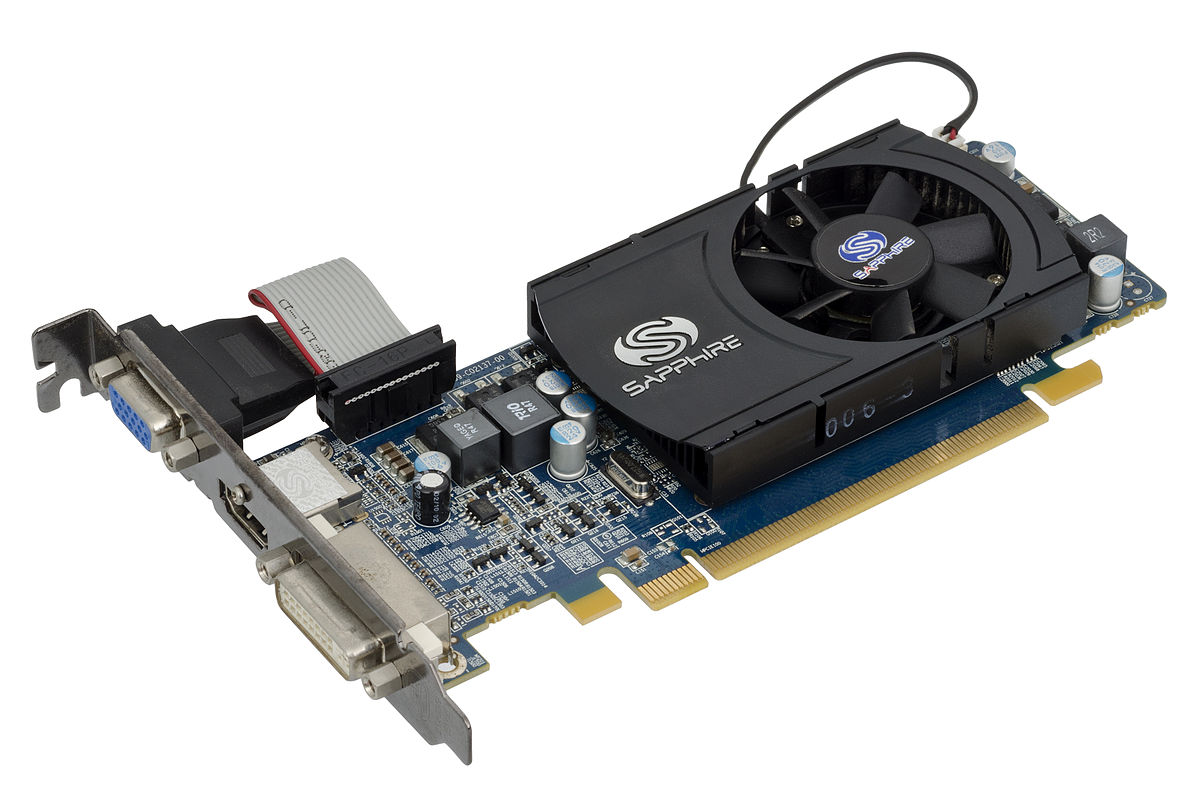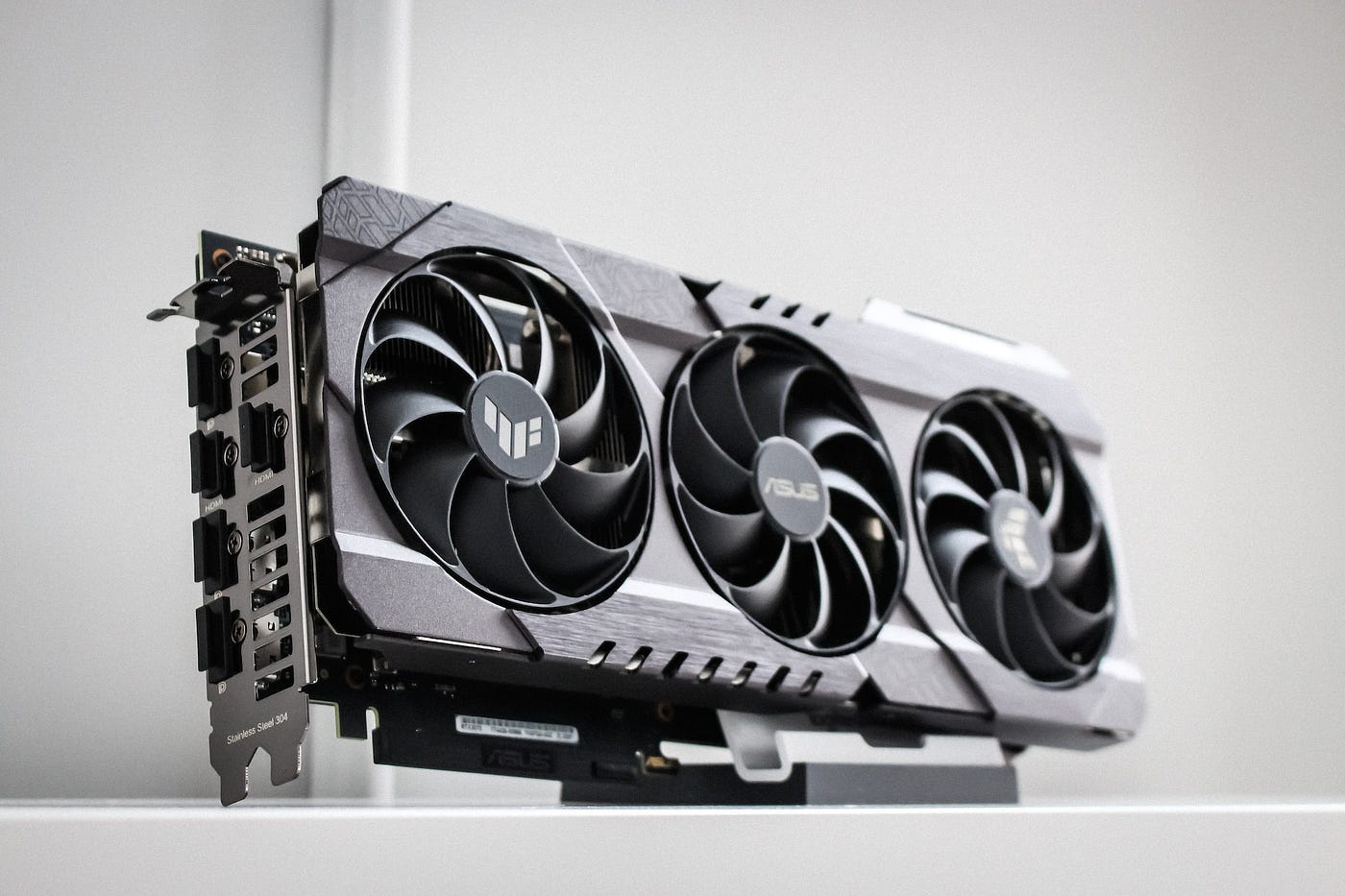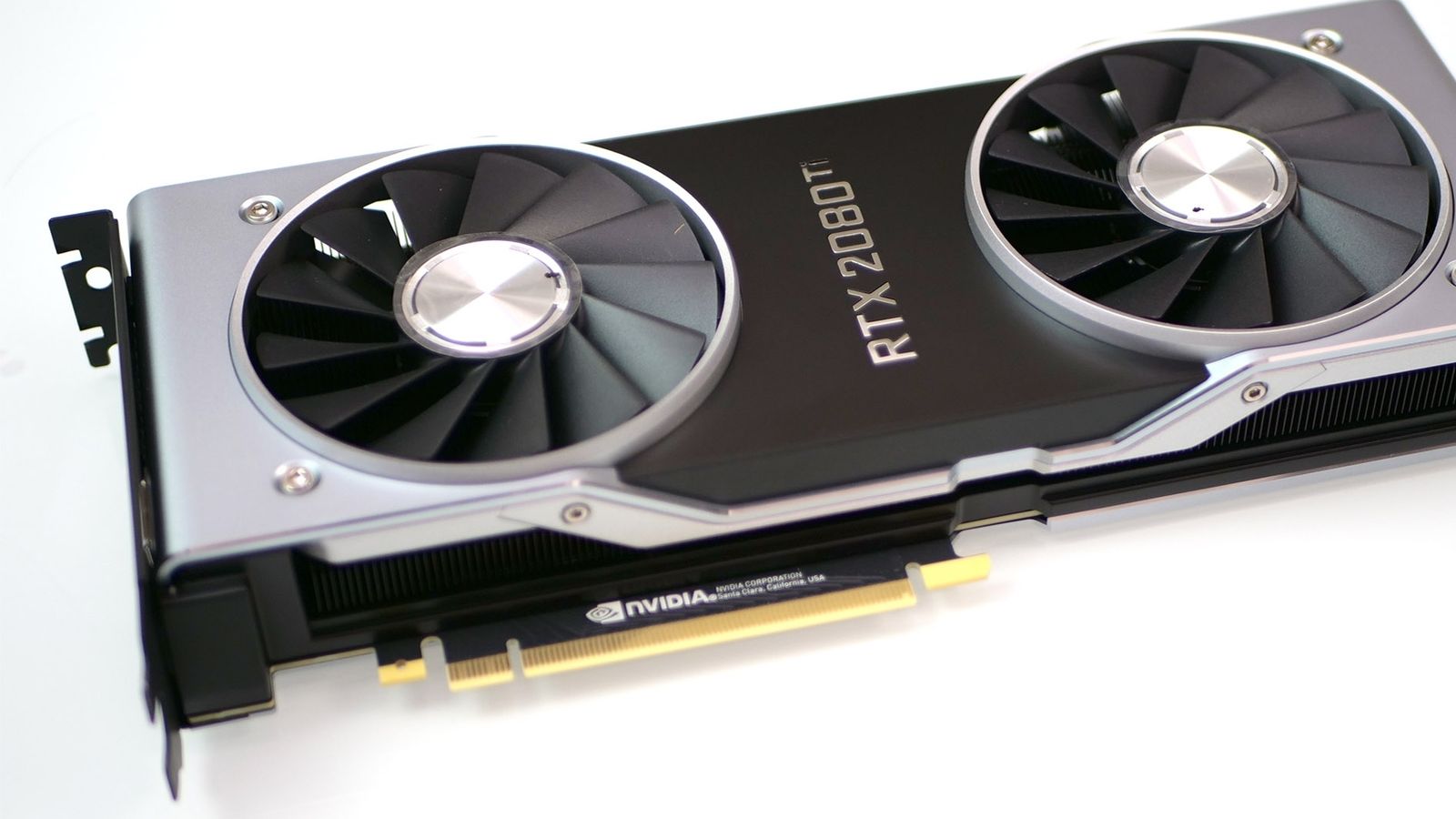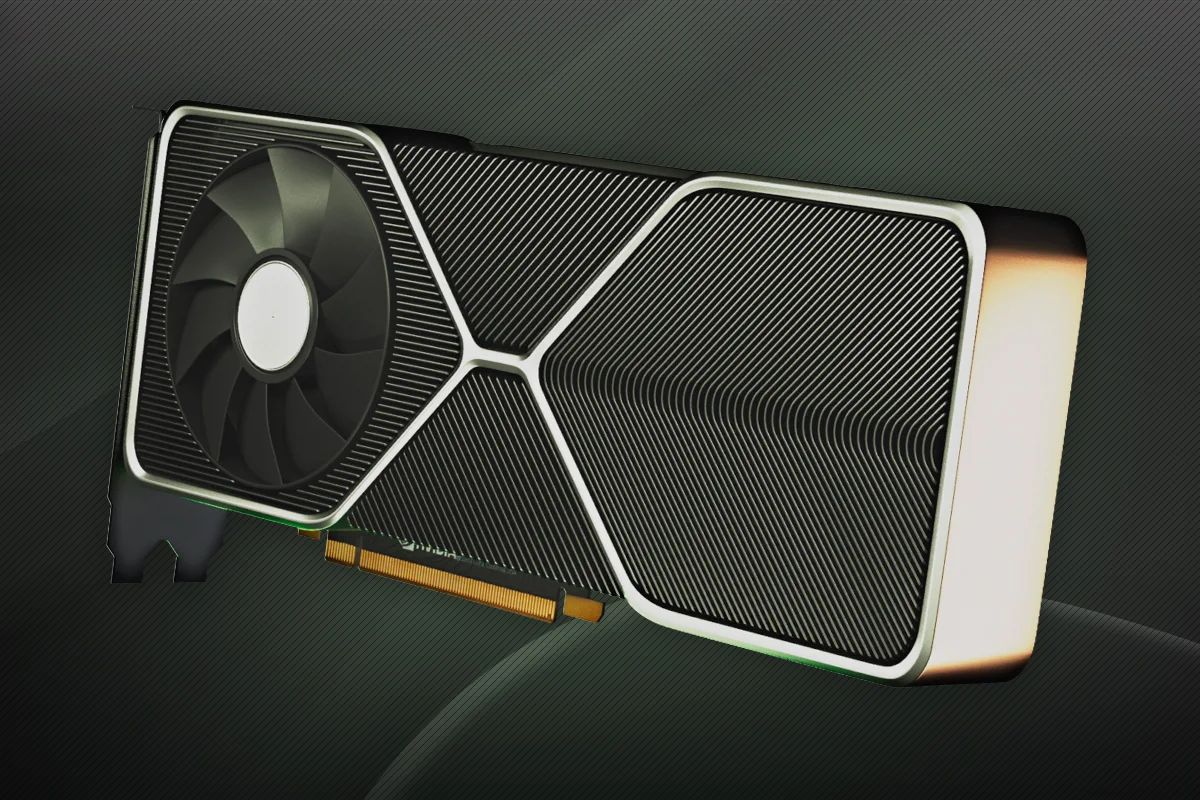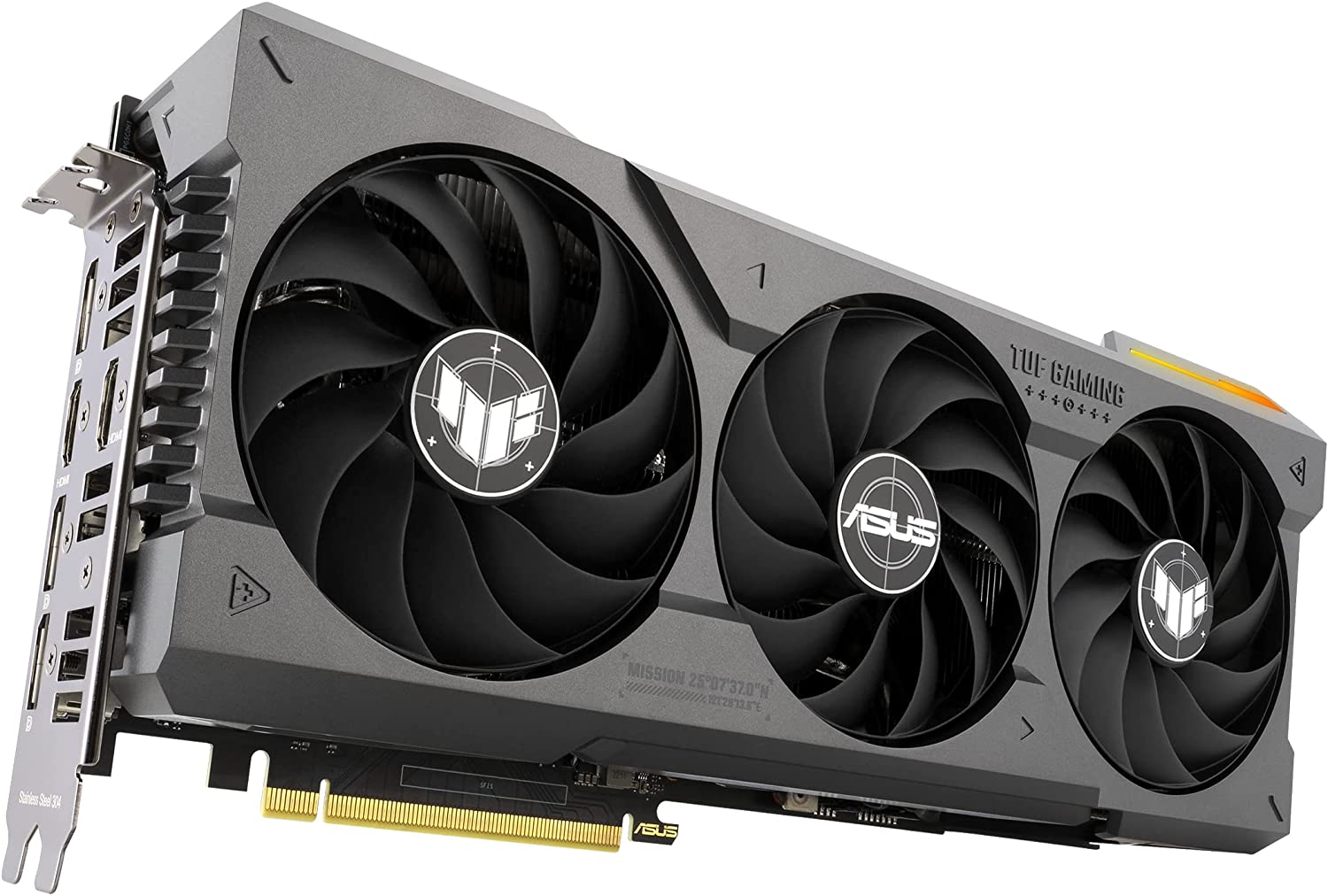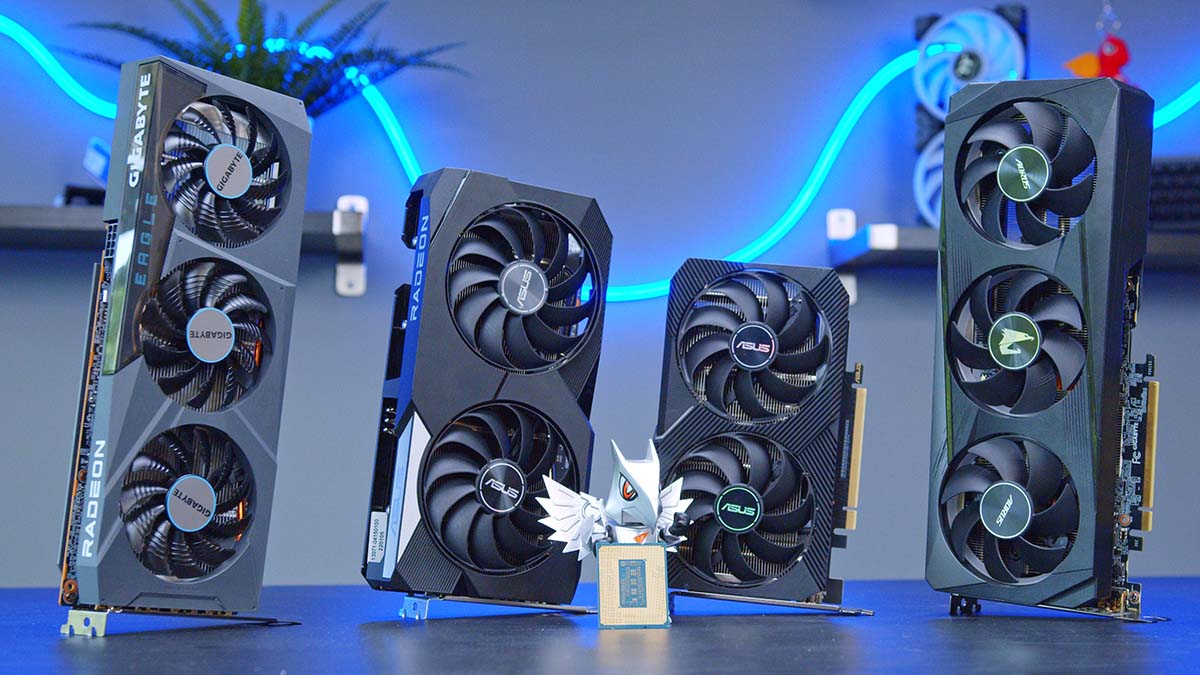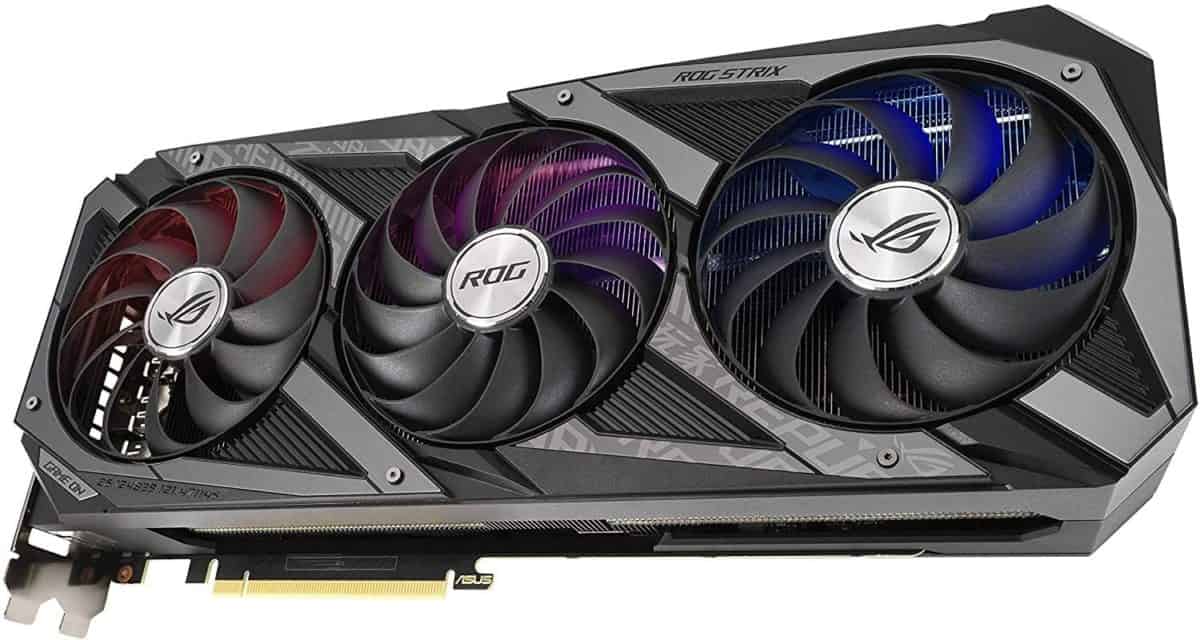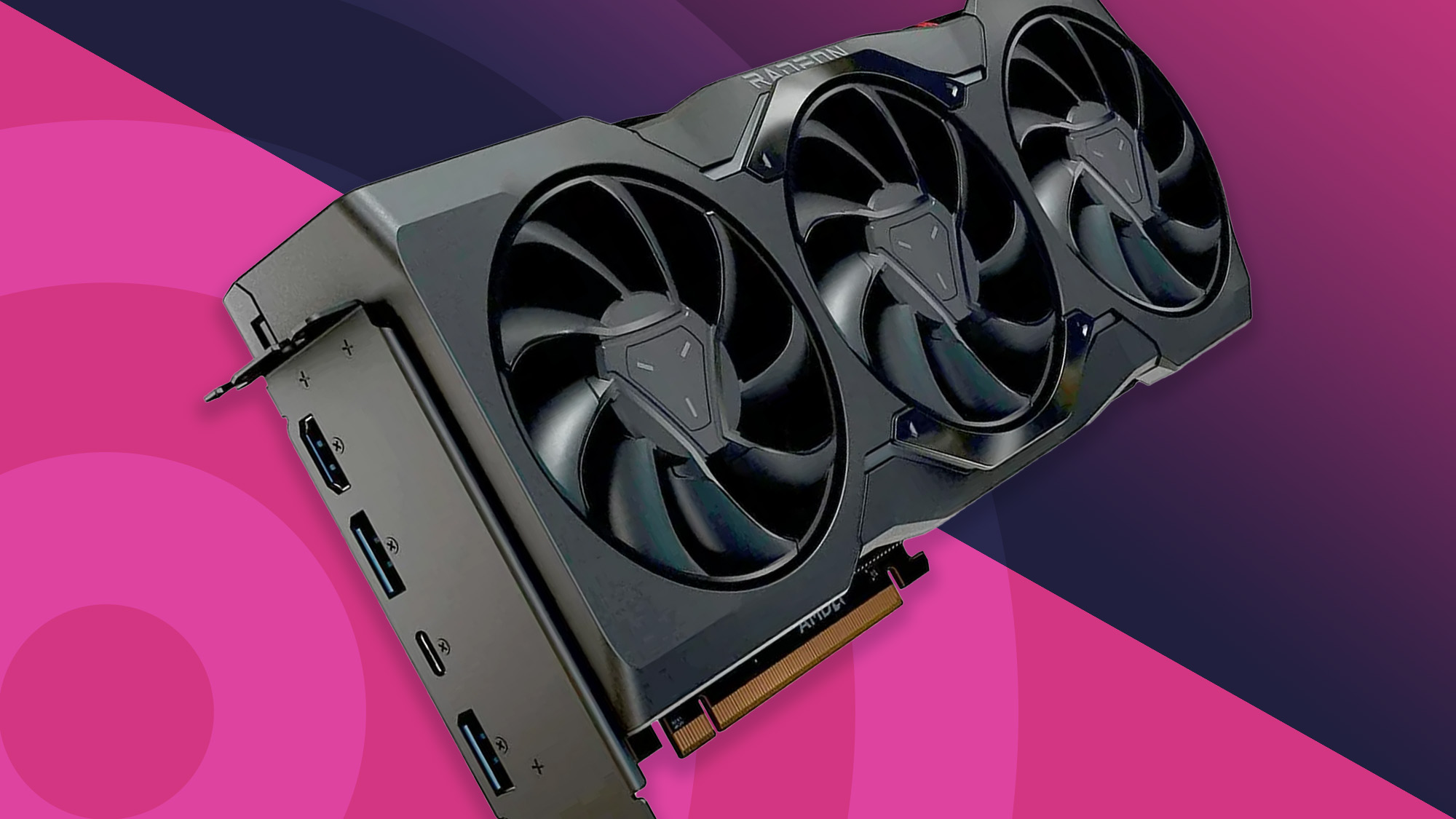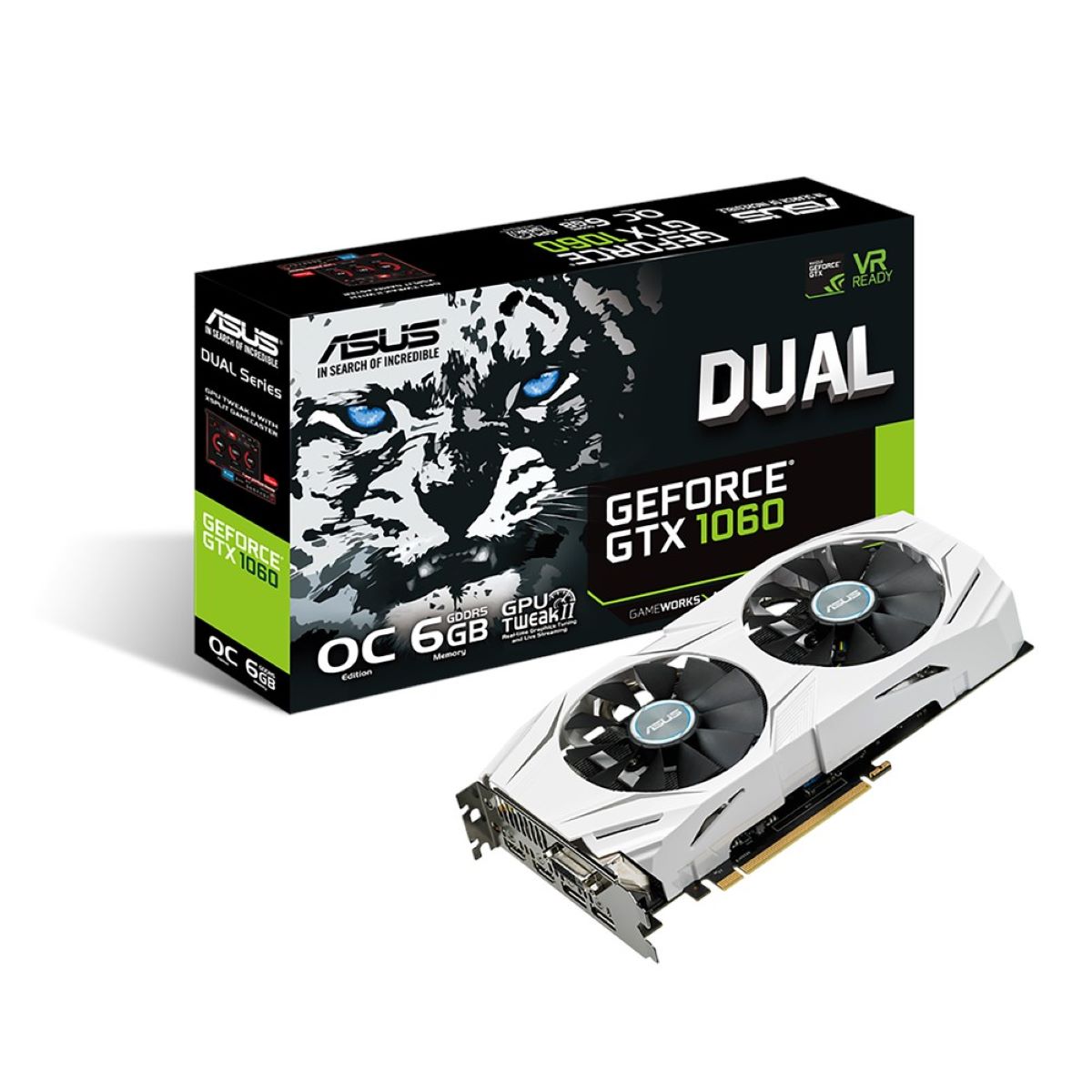Introduction
Graphics cards are essential components of modern computers, especially for gaming and graphic-intensive tasks. When shopping for a graphics card, you may have come across the abbreviation “GB” next to a number. But what does GB mean in the context of graphics cards? Understanding the significance of GB can help you make an informed decision when choosing the right graphics card for your needs.
GB stands for gigabytes, a unit of measurement used to quantify the amount of memory in a graphics card. It indicates the capacity of the card’s dedicated video memory, known as VRAM. Just like the RAM in your computer, VRAM stores data that is required for rendering images and videos on your display.
The amount of VRAM, or GB, on a graphics card plays a crucial role in its performance and capabilities. A graphics card with more GB can handle higher-resolution textures, process complex visual effects, and handle larger amounts of data simultaneously. On the other hand, a graphics card with insufficient GB may struggle to run graphically demanding games or applications, resulting in lower performance and potential visual glitches.
Explanation of GB
In the context of graphics cards, GB refers to the amount of video memory that is available for storing and processing visual data. Video memory, also known as VRAM, is a specialized type of memory that is dedicated to graphics processing. It is separate from the regular system RAM and is designed to handle the significant demands placed on a graphics card.
The GB measurement represents the capacity of VRAM in gigabytes. Just like your computer’s RAM, the more VRAM a graphics card has, the more data it can store and access quickly. This is particularly important for gaming and graphic-intensive tasks, as it allows the graphics card to handle larger textures, process complex shaders, and run multiple displays simultaneously.
It’s important to note that not all of the VRAM is used solely for storing textures and pixel data. Some portion of the VRAM is also allocated for storing essential GPU resources, such as buffers, render targets, and shaders. Therefore, the actual usable VRAM may be slightly less than the total amount listed on the graphics card specifications.
The amount of VRAM required depends on the specific tasks and applications you will be using. While casual web browsing or document editing may require minimal VRAM, gaming enthusiasts, content creators, and professionals working with graphic design, video editing, or 3D modeling may benefit from graphics cards with higher GB capacities to ensure smooth and efficient performance.
It’s worth mentioning that the amount of VRAM on a graphics card is not something that can be upgraded or expanded later. Therefore, it is crucial to choose a graphics card with an appropriate amount of GB that aligns with your current and future needs.
Importance of GB on a Graphics Card
The amount of GB on a graphics card plays a significant role in determining its performance and capabilities. Having an adequate amount of VRAM is crucial for smooth and efficient operation, especially when it comes to graphic-intensive applications and gaming.
One of the primary reasons why GB is important is because it determines the size and quality of textures that can be loaded into the VRAM. Higher GB capacities enable the graphics card to handle larger and more detailed textures, resulting in more realistic and visually stunning graphics. This is particularly noticeable in games, where high-resolution textures and intricate details enhance the overall gaming experience.
Additionally, the amount of VRAM affects the ability of a graphics card to handle complex visual effects. Effects like anti-aliasing, ambient occlusion, and dynamic shadows require significant VRAM resources to render smoothly. With insufficient GB, these effects may be compromised, leading to lower image quality and decreased overall visual fidelity.
Furthermore, having a sufficient amount of GB is crucial when using multiple displays or running applications that require a large amount of VRAM. Each monitor connected to a graphics card consumes a portion of the VRAM for rendering its content. Therefore, having higher GB capacities allows for smoother multitasking and the ability to drive high-resolution displays without compromising performance.
For content creators and professionals working with graphic design, video editing, or 3D modeling, the importance of GB cannot be overstated. These applications often involve handling large files and complex projects that require substantial VRAM resources. Insufficient GB can lead to sluggish performance, long rendering times, and even crashes or errors when working with resource-intensive projects.
Overall, having an adequate amount of GB on a graphics card is crucial for ensuring optimal performance, visual quality, and compatibility with the latest and most demanding applications. It is essential to consider your specific needs and the tasks you will be performing when choosing a graphics card to ensure that it provides sufficient VRAM for your requirements.
How GB Affects Performance
The amount of GB on a graphics card directly influences its performance, especially when it comes to rendering complex visuals and handling graphically demanding tasks. Here are some ways in which GB affects the overall performance of a graphics card:
- Texture loading: With more GB, a graphics card can store larger textures in its VRAM, resulting in quicker and smoother loading of textures. This translates to improved visual quality and reduced lag or stuttering in games.
- Higher resolutions: Displaying content at higher resolutions requires more VRAM. Graphics cards with higher GB capacities can handle the increased memory demands of higher resolutions without sacrificing performance.
- Complex visual effects: Visual effects, such as anti-aliasing, motion blur, and ambient occlusion, rely on VRAM for storing temporary data and calculations. Having more GB allows a graphics card to handle these effects efficiently, resulting in better image quality and smoother gameplay.
- Multi-monitor setups: If you use multiple monitors or plan to connect additional displays, having a graphics card with higher GB is crucial. Each monitor requires VRAM for rendering its content, and insufficient GB may lead to decreased performance or limitations in display configurations.
- Future-proofing: As games, applications, and visual content evolve, they require more VRAM to handle the increased demands. Investing in a graphics card with higher GB capacities ensures that your system can handle future software updates and advancements without needing an immediate upgrade.
It’s important to note that while having more GB can improve performance, it doesn’t guarantee better performance in every situation. Other factors, such as the graphics card architecture, clock speeds, and the GPU itself, also play a significant role in determining overall performance. The amount of VRAM is just one piece of the puzzle.
Therefore, it is important to find a balance between the right amount of GB and other specifications that align with your needs and budget. Carefully consider the specific tasks and applications you will be using your graphics card for and choose one that provides sufficient VRAM for your requirements.
How to Choose the Right Amount of GB for Your Needs
Choosing the right amount of GB for your graphics card can be a crucial decision to ensure optimal performance and compatibility with your specific needs. Here are some factors to consider when determining the appropriate amount of GB:
- Usage requirements: Assess the tasks and applications you will be using your graphics card for. If you mainly engage in casual web browsing, document editing, or streaming videos, a graphics card with lower GB capacities may suffice. However, if you are an avid gamer, content creator, or work with graphic-intensive applications, consider opting for a graphics card with higher GB to handle the demands of these tasks.
- Resolution and display setup: Determine the resolution at which you will be running your games or working with visual content. Higher resolutions, such as 4K or ultrawide monitors, require more VRAM to render the increased number of pixels. Additionally, if you plan to use multiple monitors or connect additional displays, ensure that the graphics card has enough GB to accommodate them without compromising performance.
- Graphic settings: Consider the level of graphical fidelity and detail you desire. If you prefer playing games with high-resolution textures, elaborate visual effects, and maximum graphical settings, a graphics card with higher GB will provide a smoother and more immersive gaming experience. However, if you primarily play older or less graphically demanding games, a lower GB capacity may be sufficient.
- Future-proofing: Anticipate your future needs and the potential advancements in software and games. While it’s impossible to predict the exact requirements of future applications, investing in a graphics card with slightly more GB than your current needs can provide some level of future-proofing, ensuring that your system can handle upcoming software updates and higher graphic demands.
Remember that the amount of GB is just one factor to consider when choosing a graphics card. Other specifications, such as the GPU model, clock speeds, and memory bandwidth, also influence performance. It’s essential to strike a balance between the amount of GB and other important features based on your budget and usage requirements.
Researching and comparing different graphics card models, reading reviews, and seeking expert advice can help you make an informed decision and choose the right amount of GB that will meet your needs and provide an optimal computing experience.
Understanding the Difference between GDDR and DDR
When it comes to graphics cards, you may come across terms like GDDR (Graphics Double Data Rate) and DDR (Double Data Rate) in relation to the type of memory used. Understanding the difference between these two types of memory can help you better comprehend the capabilities and performance of a graphics card.
DDR is a type of memory commonly used in computer systems, including the system RAM. It is designed to handle general computing tasks and serves as the primary memory for the CPU. DDR memory operates at lower clock speeds and has lower overall bandwidth compared to GDDR memory.
On the other hand, GDDR is specifically optimized for the needs of graphics processing. It is a variant of DDR memory that is faster and offers higher bandwidth to meet the demands of rendering high-resolution textures, complex visual effects, and handling large amounts of graphical data. Graphics cards use GDDR memory as their dedicated video memory (VRAM) to store and process graphics-related data.
The key differences between GDDR and DDR can be summarized as follows:
- Bandwidth: GDDR memory has a higher bandwidth, allowing for quicker data transfer between the graphics card and the GPU. This is crucial for smoothly rendering high-resolution textures and processing complex visual effects.
- Clock Speed: GDDR memory operates at higher clock speeds compared to DDR memory. This increased clock speed enables faster data access and processing, contributing to improved graphical performance.
- Optimization: GDDR memory is optimized for graphics processing tasks, while DDR memory is geared towards general computing tasks. This specialization allows GDDR memory to deliver better performance and efficiency in handling graphical data.
- Latency: DDR memory generally has lower latency compared to GDDR memory. While lower latency is advantageous for general computing tasks, the higher bandwidth of GDDR memory compensates for this difference in graphics-intensive applications.
When considering the performance of a graphics card, it is important to take into account both the amount of GB and the type of memory used. A graphics card with a higher GB capacity of GDDR memory will typically offer better performance and be better equipped to handle the demands of modern gaming and graphic-intensive tasks.
Understanding the distinction between GDDR and DDR memory can help you make an informed decision when choosing a graphics card that best suits your needs.
GB and VRAM: What’s the Connection?
When discussing graphics cards, the term GB often refers to the capacity of the dedicated video memory, also known as VRAM. VRAM is a vital component that stores and manages the data required for rendering images and videos on your display.
The connection between GB and VRAM is straightforward: GB represents the amount of video memory available on the graphics card. The more GB a graphics card has, the larger the capacity of its VRAM, and the more data it can store simultaneously.
Having a sufficient amount of VRAM is crucial for smooth and efficient operation, especially in graphically demanding tasks like gaming and graphic design. Insufficient VRAM can lead to performance issues, such as FPS drops, visual artifacts, and even application crashes.
When choosing a graphics card, the amount of GB on the card directly affects the VRAM capacity. Higher GB capacities allow for more textures, complex shaders, and graphical data to be stored, resulting in improved performance, visual quality, and overall user experience.
It’s important to note that the GB measurement represents the overall capacity of VRAM and includes both the space used for storing textures and pixel data, as well as the space allocated for essential GPU resources like buffers, render targets, and shaders. The actual usable VRAM may be slightly less than the total amount of GB listed on the graphics card specifications.
Choosing a graphics card with an appropriate amount of GB and VRAM capacity depends on your specific needs and usage requirements. Factors such as the resolution you intend to use, the complexity of the applications or games you’ll be running, and whether you’ll be using multiple displays all come into play.
It’s worth mentioning that while GB and VRAM play a significant role in graphics card performance, they are not the only factors to consider. The GPU architecture, clock speeds, memory bandwidth, and overall quality of the graphics card should also be taken into account when making your decision.
By understanding the connection between GB and VRAM, you can make a more informed decision when choosing a graphics card that provides sufficient video memory to fulfill your requirements and deliver the best possible performance for your specific tasks.
Common Misconceptions about GB on Graphics Cards
When it comes to the amount of GB on graphics cards, there are some common misconceptions that can lead to confusion or misinterpretation of its importance. Let’s debunk these misconceptions:
- More GB always equals better performance: While having more GB can be beneficial in certain scenarios, it is not the sole determining factor in graphics card performance. Other factors such as the GPU architecture, clock speeds, and memory bandwidth also significantly impact performance.
- Higher GB is necessary for all users: The appropriate amount of GB depends on your specific usage requirements. If you primarily engage in casual web browsing or office tasks, a graphics card with lower GB capacities may suffice. It’s important to match the amount of GB to your intended usage to avoid overspending on unnecessary resources.
- Adding more GB will automatically improve gaming performance: While having more GB can benefit graphic-intensive tasks like gaming, it doesn’t automatically guarantee better performance. The graphics card’s overall quality and capabilities, including the GPU architecture and memory bandwidth, are equally important in determining gaming performance.
- VRAM can be upgraded or expanded later: Unlike system RAM, the VRAM on a graphics card cannot be easily upgraded or expanded. This means that the amount of GB you initially choose is what you will be stuck with until you upgrade your entire graphics card.
- Higher GB is always necessary for higher resolutions: While higher resolutions do require more VRAM, it’s not a linear relationship. It’s possible to run certain games or applications at high resolutions with lower GB capacities, as long as the graphics card is capable of efficiently utilizing the available VRAM.
Understanding these misconceptions can help you make more informed decisions when choosing a graphics card. It’s important to consider your specific needs, usage requirements, and budget, rather than solely focusing on the amount of GB. By considering all relevant factors, you can select a graphics card that strikes the right balance between performance, price, and future-proofing.
Conclusion
Understanding the meaning and significance of GB on graphics cards is essential for making informed decisions when purchasing a graphics card that aligns with your needs and budget. GB refers to the capacity of the dedicated video memory (VRAM) on a graphics card and plays a crucial role in determining its performance and capabilities.
Having an adequate amount of GB ensures that your graphics card can handle the demands of graphically intensive tasks, such as gaming, content creation, and 3D modeling. More GB allows for higher resolution textures, complex visual effects, and multitasking with multiple displays.
It’s important to debunk some common misconceptions about GB, such as the idea that more GB always equals better performance or that VRAM can be easily upgraded. It’s crucial to consider not only the amount of GB but also other factors like GPU architecture, clock speeds, and memory bandwidth when choosing a graphics card.
By assessing your specific needs, considering the resolution and display setup you’ll be using, and planning for future software advancements, you can choose the right amount of GB that will provide the optimal performance and visual quality.
Keep in mind that the GB measurement is just one factor to consider, and it’s important to strike a balance between GB and other features based on your individual requirements.
Ultimately, selecting the appropriate amount of GB on a graphics card will ensure that you have a smooth and enjoyable computing experience, whether you’re gaming, working with graphic-intensive applications, or simply browsing the web.







